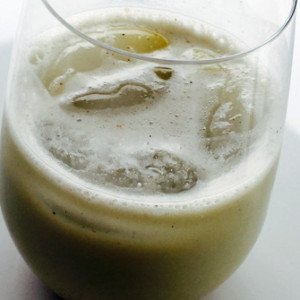
< HOME PAGE
- Three Recipes to Bring to a BBQ This Summer
- Summer Partying: Tips and Tricks to Healthful Feasting
- Smoothies
- Egg-Stacy
- Sweet, Sweet, Passover!!!
- Super Bowl 50: Tricks for Touchdown Eating
- Make a Fresh Start: Organizing your Refrigerator
- Our Healthy Thanksgiving Picks
- Your Strategy for Thanksgiving
- Giving Thanks
- November Mindfulness
- 5 Great Ways to Enjoy Pumpkin this Season
- 6 Tips for Successful Eating This Fall
- 12 Tips for the Healthy Barbeque
- Macha
- 5 Tips to Keep Alcohol from Sabotaging Your Diet
- The Perfect Beach Cooler
- Healthy Summer Kitchen Must Haves
- Open for Business: Love from Lara Metz Nutrition
Matcha

Is it just me, or does every Pintrest and Instagram post seem to be about matcha? It’s in every juice bar, health forward eatery and trendy spot you walk by. If you’re like most of us, you didn’t grow up with an after dinner mug of matcha, so you have every right to be wary. Still, you weren’t raised with chia seeds, quinoa and kale chips, either, and look how well those are working for you. Your skepticism is noted, but here’s why you should give matcha a try:
What is it?
Matcha is green tea powder that comes from a special technique of drying and processing tea leaves. It has roughly 25 mg of caffeine per cup, about a third that found in coffee and it is not linked to jitteriness or stimulant effects.
Why should you try it?
- Loaded with cancer fighting antioxidants. Matcha has a super high concentration of antioxidants – over 130 times the antioxidants found in a cup of green tea.
- Detox benefits. If you are looking to cleanse and rid your body of toxins, matcha is great for your liver and kidneys, which filter toxins from your blood.
- Nutrient powerhouse. There is amazing nutrition for virtually no calories: vitamin C, fiber, chlorophyll, selenium, chromium, zinc and magnesium to name a few.
- Research says to. There is strong research linking matcha to improved mood, cognition and concentration. It is also linked to improved blood sugar control, cholesterol lowering and disease prevention.
How does it taste and how should you try it?
No lies here. Matcha tastes healthy. It isn’t pretending to be sinfully delicious. It is not sweet, and it does take practice to drink straight up from a mug dissolved in hot water. The bright green powder has the flavor of a really strong cup of green tea, because that is exactly what it is. If this information is turning you off, don’t stress. It took you a while to appreciate the bitterness of wine and practice to love flax meal, and learning to love matcha is even easier because it is super versatile. Like any tea, you can adjust how concentrated or weak you like your flavor by adding more or less.
Here’s how*:
- Latte: Sub your coffee or chai and try an iced matcha tea latte
- Smoothie: dissolve a spoonful of matcha powder in a little bit of warm water, milk or almond milk and add to your favorite smoothie recipe
- Oatmeal: add a spoonful of matcha powder to your oats and prepare as usual (top with a spoonful of coconut and slivered almonds)
- Whole grains: add a spoonful of matcha to your cooking water for pasta, quinoa, bulgur, rice, lentils or pilaf for increased nutrition
- Marinade: Add a spoonful of matcha into your salad dressing or marinades to enhance the flavor and up the nutrients
* matcha powder works best in recipes if it is whisked in hot (not boiling water) to form a thin paste. If you skip this step, you risk not very delicious clumps of matcha in your food or beverage.
Where to buy?
In the olden days, matcha was only found in health food stores. You can find matcha drinks at most high quality coffee shops and specialty markets sell it next to the tea or in the supplement section of the store.
Whats the verdict?
We love matcha at the office. I encourage my clients to try it and to do their best to get at least a few spoonfuls in every week. Eating healthfully encourages healthful behaviors and a healthy body. Matcha tops my list as a nutrition YES for everyone.



